
LOOK AND BUILD
Design is decidedly nice, giving a feel of quality and strenght, suggested by its weight (560 gr) which proves the use of solid materials, asset of all Tokina professional lenses. The first ring adjusts the focal lenght and there are indicated all the numbers from 11 to 16. The second ring, for focussing, is active when it's pulled back allowing manual focus, otherwise it rotates independently: it's not possible a manual correction of focus when in AF mode (full time manual focus). Focus mechanism is internal and possible up to <30 cm, for a maximum reproduction ratio of 1:11. Filter size is 72 mm.
SHARPNESS AND DISTORTION
Below, a sequence of shots with their crops at different apertures, varying the focal lenght and the distance from the subject in order to keep the reproduction ratio constant. I tested the lens at three different focal lenghts: 11mm (minimum), 13.5mm (medium) and 16mm (maximum). Barrel distortion is more at the minimum and almost none at 16mm, but it's always within a post processing adjustability:
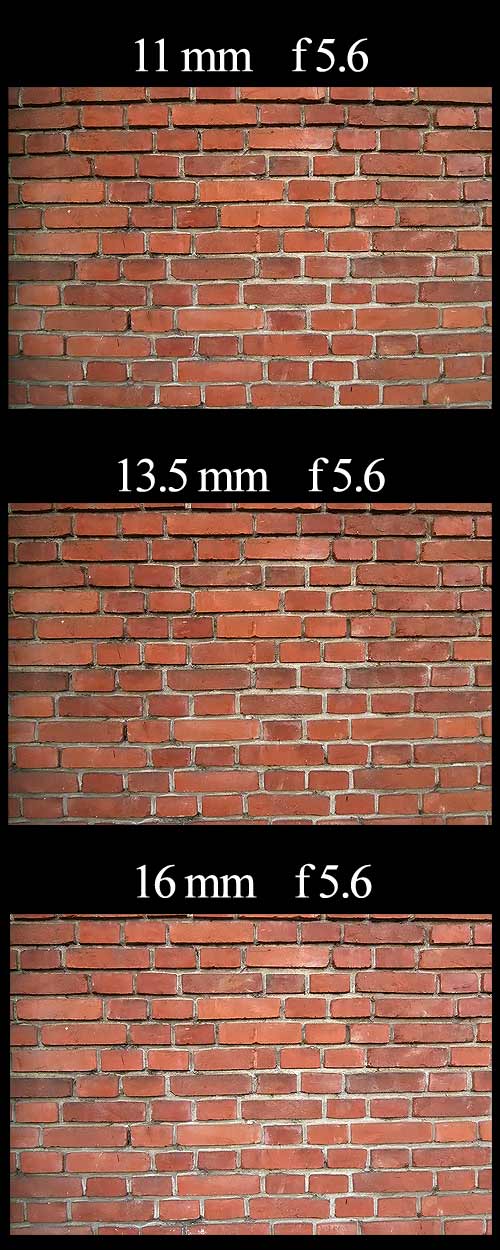
Sharpness, as you can see in the following 100% crops, is very good at all focal lenghts and apertures: this was expected for an only 1.45 x zoom, but the top performance is reached at 16 mm; at 11 mm the level is almost equal while it seems to slightly fall at the medium lenght. Borders decay comparing to the centre, expecially at low focal lenght and short distances, because the edges of the framed plan are more far then the centre. With irregular subject, if focus is on elements placed close to the borders, sharpness remains good, as you can se in the further tests below.
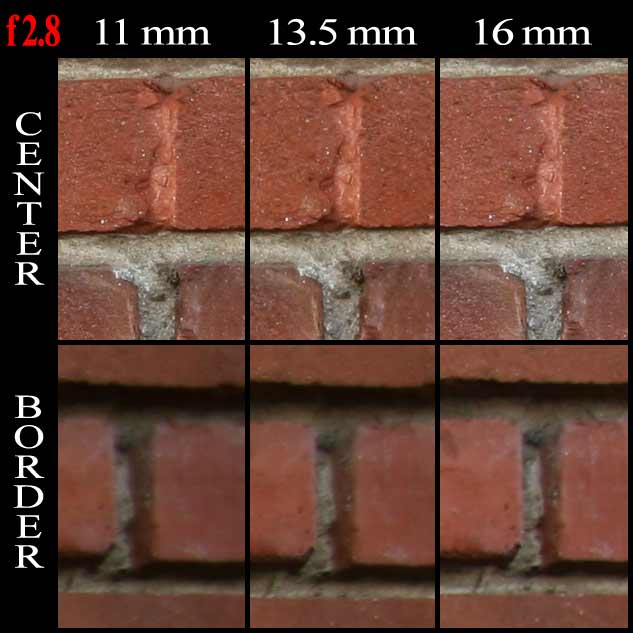
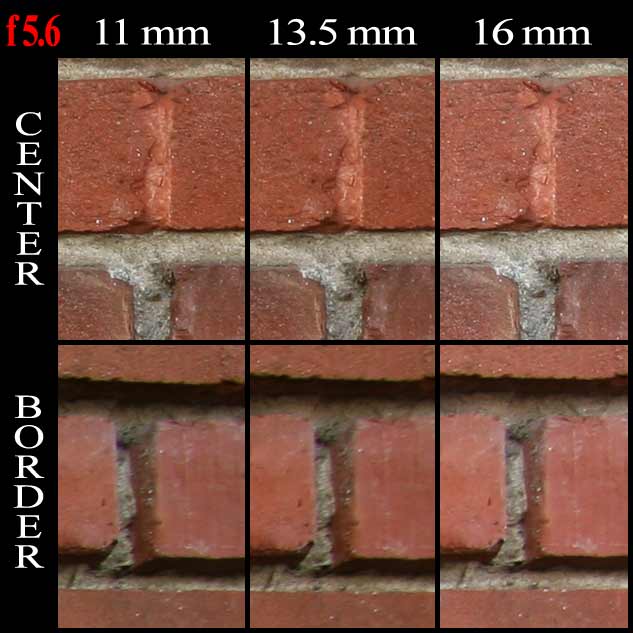
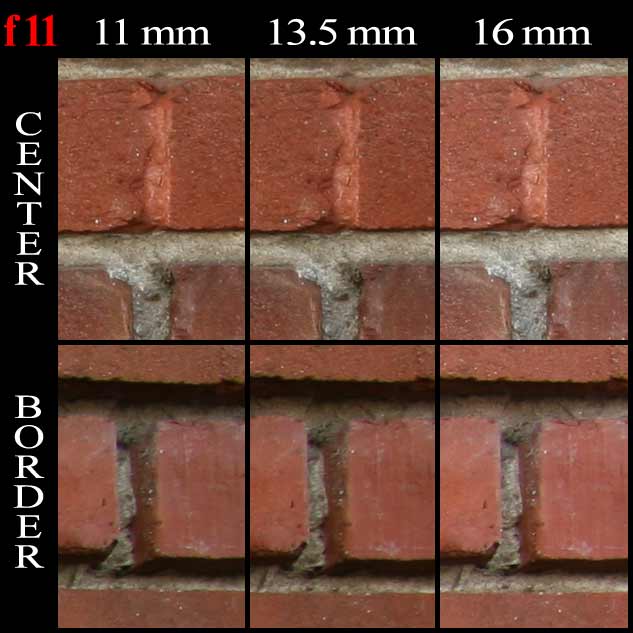
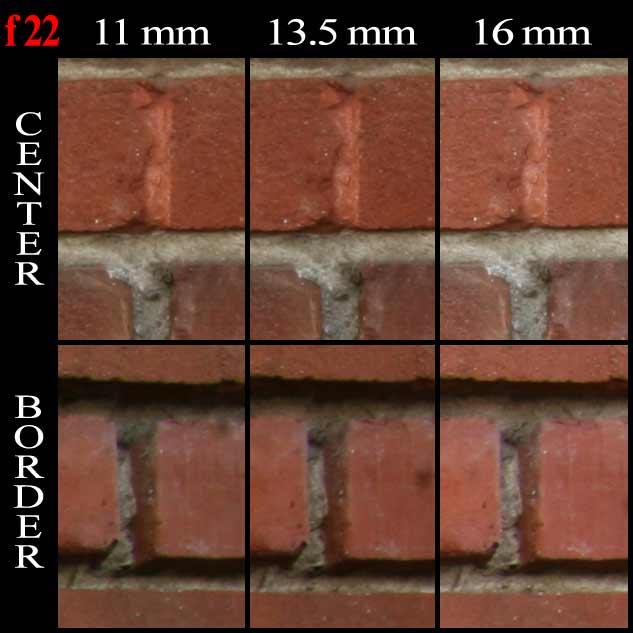
VIGNETTING
Obviously, such a wide angle lens produces vignetting, although this problem is pherhaps the least annoying and the most correctable at computer. Here is how it's reduced with aperture and zooming in a sequence of shots on a white wall, with light coming from above an focus on infinity:
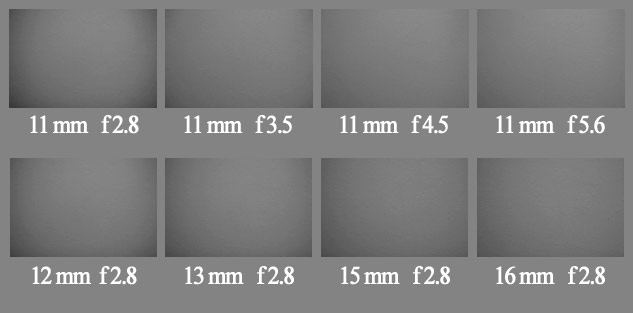
LIGHT SOURCES AND FLARE
The lens performs well in backlight shots, holding excellent contrast. Below, sun is in the frame; despite some small green spots due to internal reflection (marked in the red circle), the photo remains sharp and contrasty:
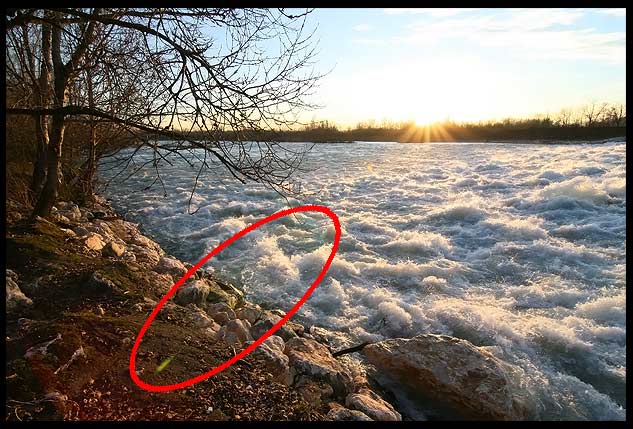
Below, a night HDR with many open light sources in the frame; here too you can observe some localized spots and tracks, easly correctable in post processing, with contrast always high:
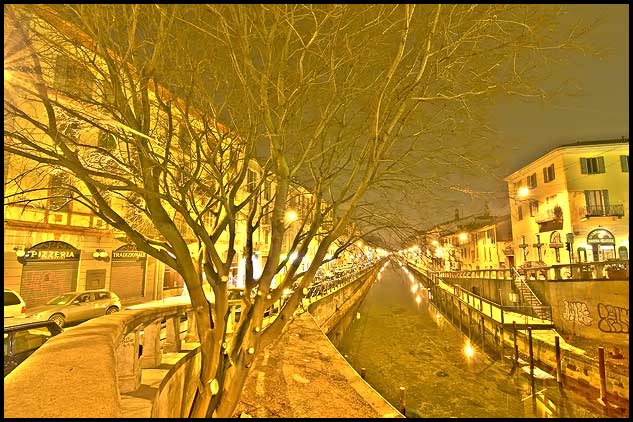
CHROMATIC ABERRATIONS
Below, three examples of chromatic aberrations that I could spot over a wide sample of shots. Even here the lens is not perfect but contains well enough the flaw, which slightly appears in silouhettes, out of the focus and at the borders at very small shooting distance:
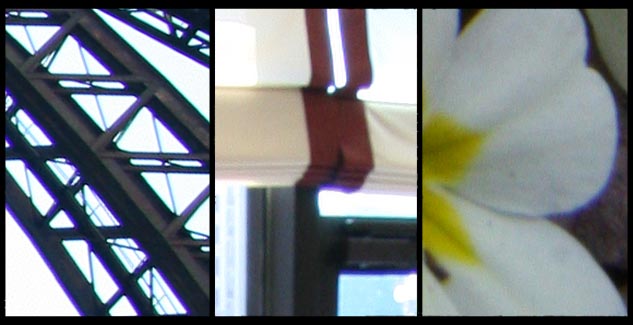
DEPHT OF FIELD AND CONVENIENT APERTURES
In the following pictures I analyze the results of closing the diaphragm on sharpness and depth of field, in order to know the best "f" number according to the shutting conditions. Overclosing worsens the optical performance more than it extends depth of field, which at 11 mm is quite deep even wide open. Below, a night shot with tripod; focus is onto the statue, 3/4 mt far from the camera:
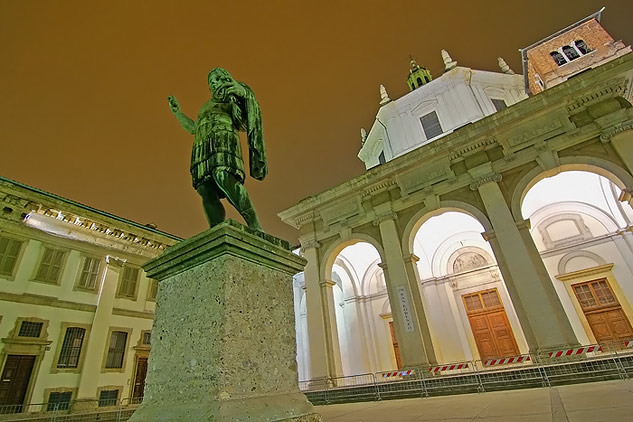
Further, unprocessed 100% crops for the indicated diaphragms, where the framing contains both the foreground (pedestal) and the background (church's facade). Sharpen is clearly good already wide open and across the whole field, but the sharpest diaphragm is F/5.6, on the foreground and background as well. At F/8 the image is a bit softer and further closure doesn't make the field deeper but it damages the sharpness: in conclusion, with no foreground closer than 3/4 mt, with some exceptions, it's not adviceble to close over F/5.6.
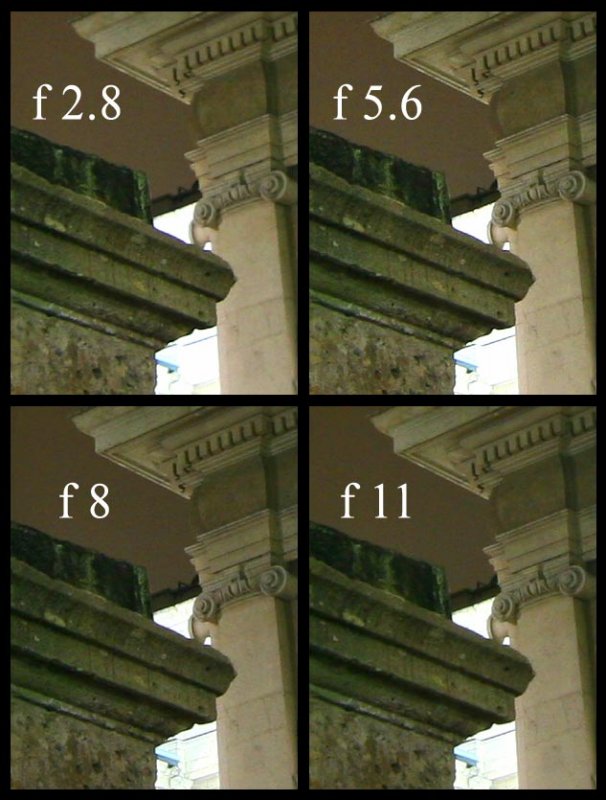
In the following photo the foreground element is at the minimum focussing distance (less than 30 cm): this was shot at f14, with focus at 50 cm, which resulted in a good setting for a web sample:
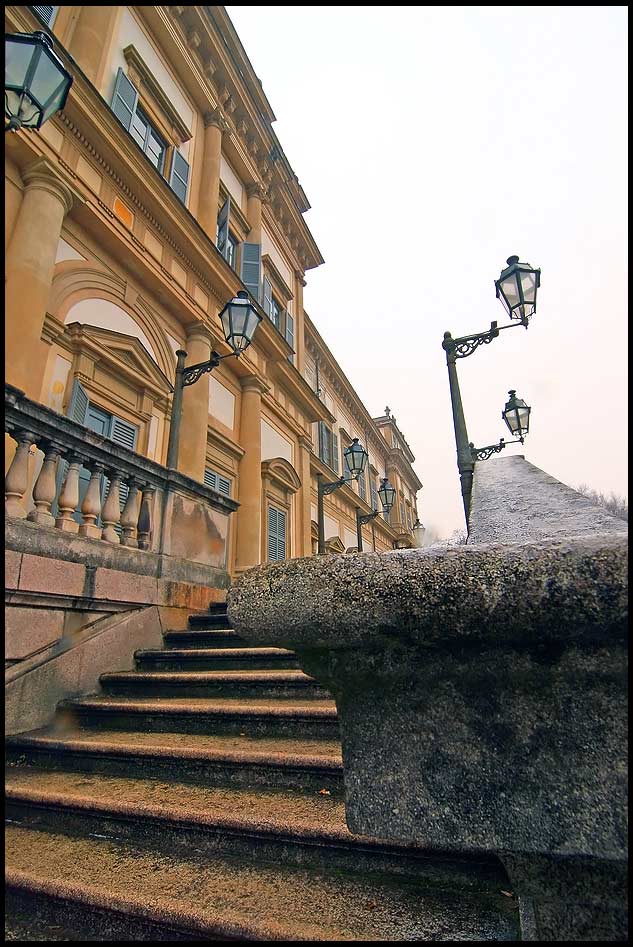
Below, unprocessed 100% crops for the indicated diaphragms of the shots made to determine the best "f" number and focussing distance in order to get a sharp result when depth of field must range from the minimum to infinity: focus is at 30 cm (left column) and at 60 cm, which is the iperfocal distance (right column). With such a close foreground, depth of field keeps getting better up to f22, but in most of the cases it will be preferable to stop at f16, having the foreground in focus and letting the background just a bit soft, for a more tridimensional effect and better final result:
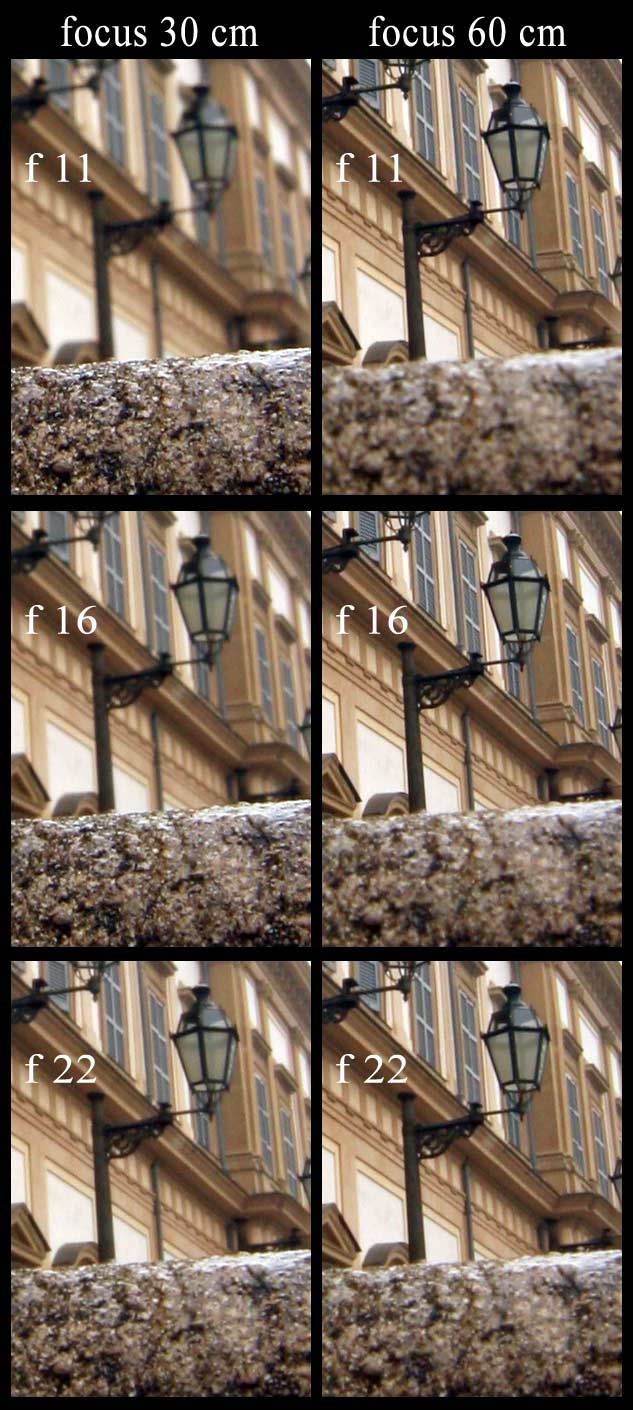
TOKINA vs ZEISS
I tried to compare the Tokina with the Zeiss Distagon 28mm f 2.8 for Contax/Yashika mount, a champion among the 28mm SLR prime lenses with f2.8 and retrofocus optical project. The photos below have no post processing but a little sharpen, equally applyed to both of them, to compensate a loss of sharpness caused by web adaptation. In these shots, made on tripod, I adjusted the distance from the subject according to the focal lenght, in order to obtain approximately the same reproduction ratio. Both the lenses are clearly very good, and the visual effect is even very similar, thanks to plasticity, contrast and deep blacks: this is a remarkable result for a third party zoom, although it's a recent product beside the old Zeiss. Neverthless a couple significant differences are observable: cromatic rendition of the Tokina is nice, neutral and saturated with no color cast; in the Zeiss it's warmer, probably due to the antireflection coating becoming yellow with age (while the Tokina is new, the tested Zeiss specimen was made at least 20 years ago, it feels in fact like some magenta is absorbed in its photo). The second difference, in this case in favour of the Zeiss, is a better brightness in the shadows, which the Tokina tends to darken sooner: that's because the prime includes a lesser number of elements in its optical project: making them clearer in post processing is the easy solution.
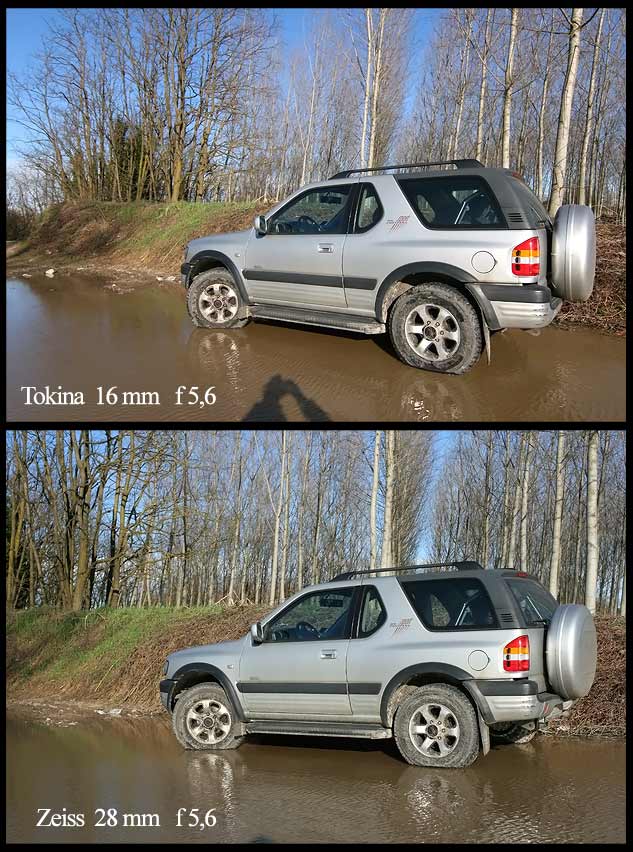
Below, comparing unprocessed 200% crops from Tokina and Zeiss at frequently used apertures: apart from the colours, the Zeiss shows a better sharpness, especially at f2.8. The difference is in my opinion unsignificant, also considering these are 200% crops, but it's there and it was expected. At the borders both lenses decay, the Zeiss resisting better but 28mm is an easier optical project and this lens is designed for full frame, while the Tokina is for APS.
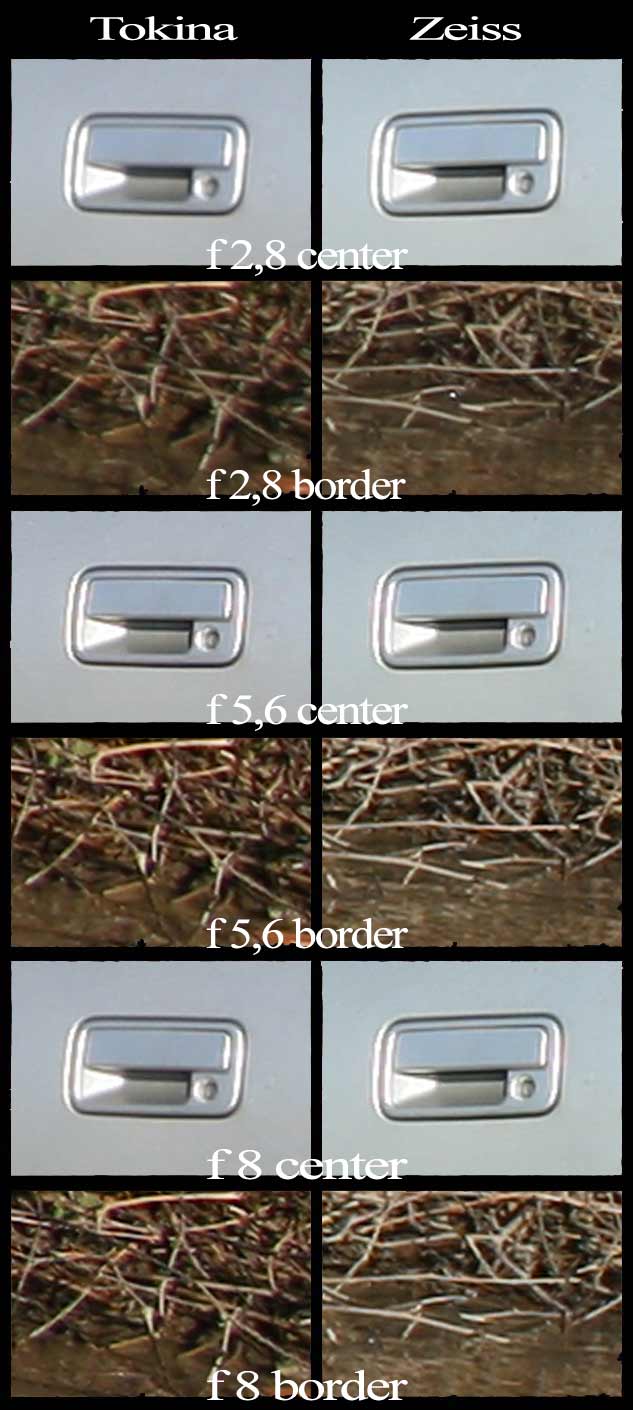
CONCLUSIONS
I consider it a very good lens with a very good value for money. It satisfied me in every respect I analized, but giving its best in the most important one: sharpness, contrast, colours and visual effect. I think it is, at the moment, one of the best third party super-wide zoom for APS. Very useful.
Paolo Oltrona Visconti © 02/2011